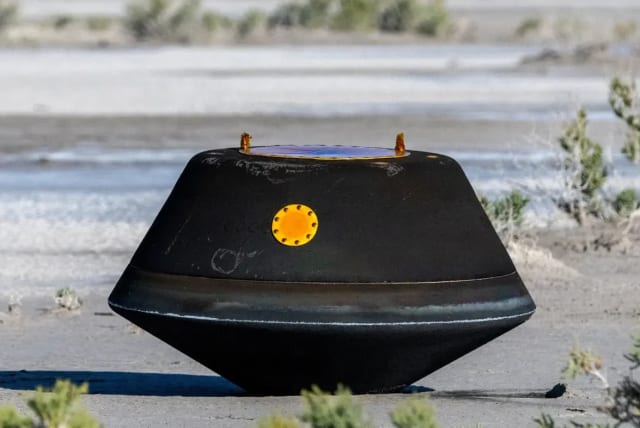NASA retrieves asteroid sample, but can't open the lid to get it

After three years, a capsule returned to Earth with material collected from an asteroid, but the majority of the samples remain inaccessible due to a problem with two screws.
When embarking on a space mission to an asteroid and successfully landing on it to collect a sample, there are many potential obstacles to overcome, but who would have thought opening a lid would be part of it?
In late September, NASA achieved a remarkable feat by returning a sample of the asteroid Bennu to Earth as part of the ambitious OSIRIS-REx mission. However, upon attempting to open the capsule containing the sample, scientists encountered an unexpected setback – they can't access the mechanism responsible for collecting the samples, leaving a significant portion of them trapped inside.
Why can't NASA open the lid?
This mechanism, known as TAGSAM (Touch-And-Go Sample Acquisition Mechanism), features a robotic arm with a plate-like device attached to its end. Upon contact with the asteroid's surface, nitrogen gas was released, pushing regolith into the sample collection containers located in the device.
"In the last week, the team at NASA’s Johnson Space Center in Houston changed its approach to opening the TAGSAM head, which contained the bulk of the rocks and dust collected by the spacecraft in 2020," NASA stated in a recent update. "After multiple attempts at removal, the team discovered two of the 35 fasteners on the TAGSAM head could not be removed with the current tools approved for use in the OSIRIS-REx glovebox. The team has been working to develop and implement new approaches to extract the material inside the head, while continuing to keep the sample safe and pristine."
Although this may initially seem like a minor issue with a simple solution (couldn't NASA borrow a wrench?), the problem actually lies in the size constraints of the tools used by the crew. All tools must fit into the glovebox, which is filled with nitrogen to prevent contamination of the samples from Earth's atmosphere.
The team now faces the challenge of finding a way to access the trapped samples using their available tools or finding new tools that can fit into the glove box without risking damage to the asteroid samples.
Thus far, the team has managed to retrieve 70.3 grams of rocks and dust from both inside and outside the capsule, surpassing their initial goal of 60 grams. However, a significant amount of material remains trapped inside the capsule, inaccessible due to the unopened fasteners.
NASA plans to develop and practice a new technique for removing these fasteners in the coming weeks while continuing to analyze and study the samples already retrieved.
Jerusalem Post Store
`; document.getElementById("linkPremium").innerHTML = cont; var divWithLink = document.getElementById("premium-link"); if (divWithLink !== null && divWithLink !== 'undefined') { divWithLink.style.border = "solid 1px #cb0f3e"; divWithLink.style.textAlign = "center"; divWithLink.style.marginBottom = "15px"; divWithLink.style.marginTop = "15px"; divWithLink.style.width = "100%"; divWithLink.style.backgroundColor = "#122952"; divWithLink.style.color = "#ffffff"; divWithLink.style.lineHeight = "1.5"; } } (function (v, i) { });

